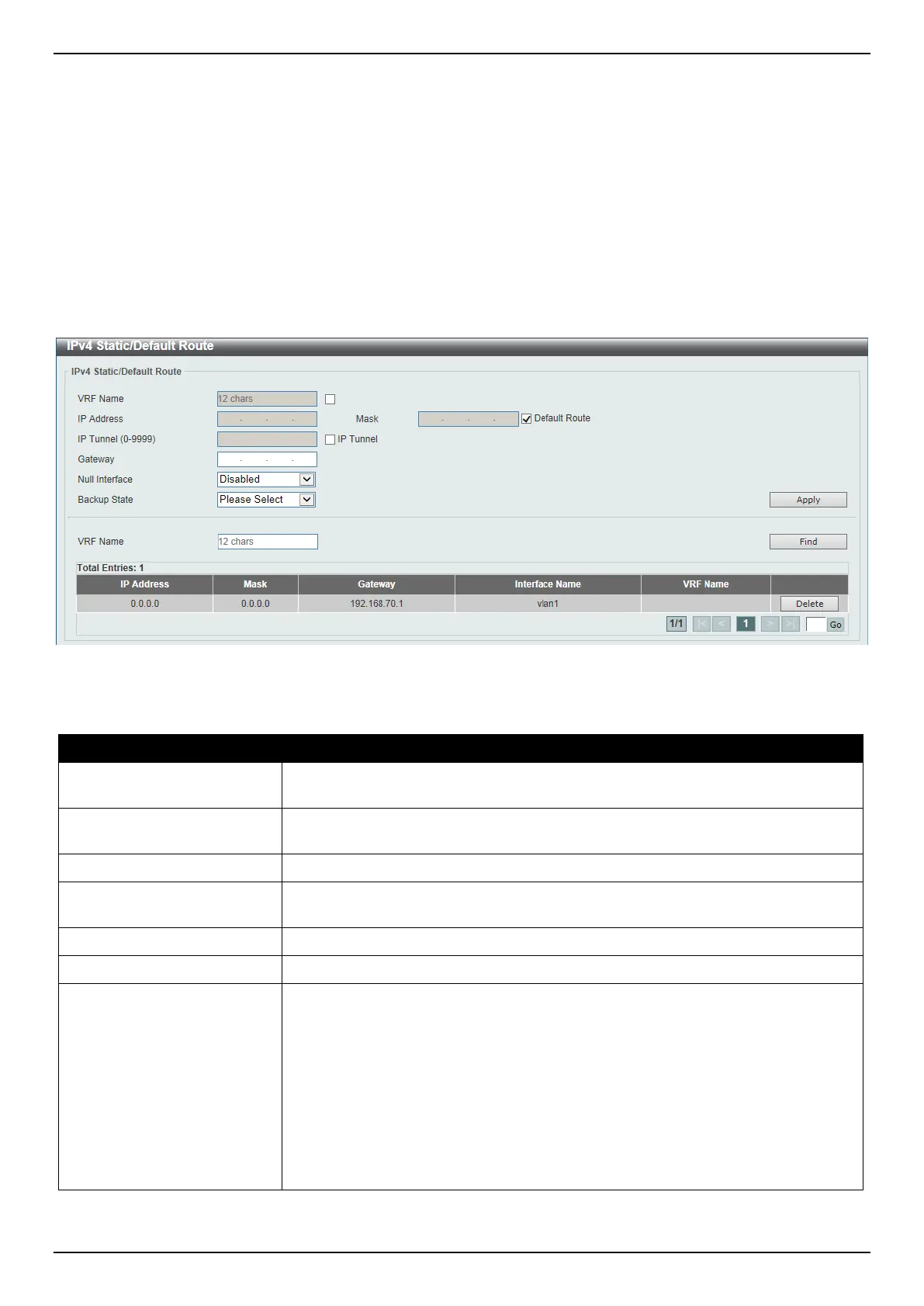DGS-3630 Series Layer 3 Stackable Managed Switch Web UI Reference Guide
228
IPv4 Static/Default Route
This window is used to display and configure the IPv4 static and default route settings. The Switch supports static
routing for IPv4 formatted addressing. Users can create up to 512 static route entries for IPv4. For IPv4 static routes,
once a static route has been set, the Switch will send an ARP request packet to the next hop router that has been set
by the user. Once an ARP response has been retrieved by the Switch from that next hop, the route becomes enabled.
However, if the ARP entry already exists, an ARP request will not be sent.
The Switch also supports a floating static route, which means that the user may create an alternative static route with
a different next hop. This secondary next hop device route is considered as a backup static route when the primary
static route is down. If the primary route is lost, the backup route will become active and begin forwarding traffic.
Entries into the Switch’s forwarding table can be made using an IP address, subnet mask and gateway.
To view the following window, click L3 Features > IPv4 Static/Default Route, as shown below:
Figure 6-21 IPv4 Static/Default Route Window
The fields that can be configured are described below:
Parameter Description
VRF Name
Select and enter the name of the VRF instance here. This name can be up to 12
characters long.
IP Address
Enter the IPv4 address for this route here. Tick the Default Route option to use
the default route as the IPv4 address.
Mask
Enter the IPv4 network mask for this route here.
IP Tunnel
Select the IP Tunnel option to use the IP tunnel feature and enter the tunnel ID in
the space provided. The range of IDs is from 0 to 9999.
Gateway
Enter the gateway address for this route here.
Null Interface
Select to enable or disable the NULL interface here.
Backup State
Select the backup state option here. Options to choose from are:
• Primary - Specifies the route as the primary route to the destination.
• Backup - Specifies the route as the backup route to the destination.
• Weight - Specifies a weight number greater than zero, but less than the
maximum paths number. This number is used to replicate identical route
paths (multiple copies) in the routing table, so the paths get more chance of
being hit for traffic routing. If the weight number is not specified for the static
route, the default for the path exists in the hashing table. Enter the weight
value in the space provided. The range is from 1 to 64.
Click the Apply button to accept the changes made.

